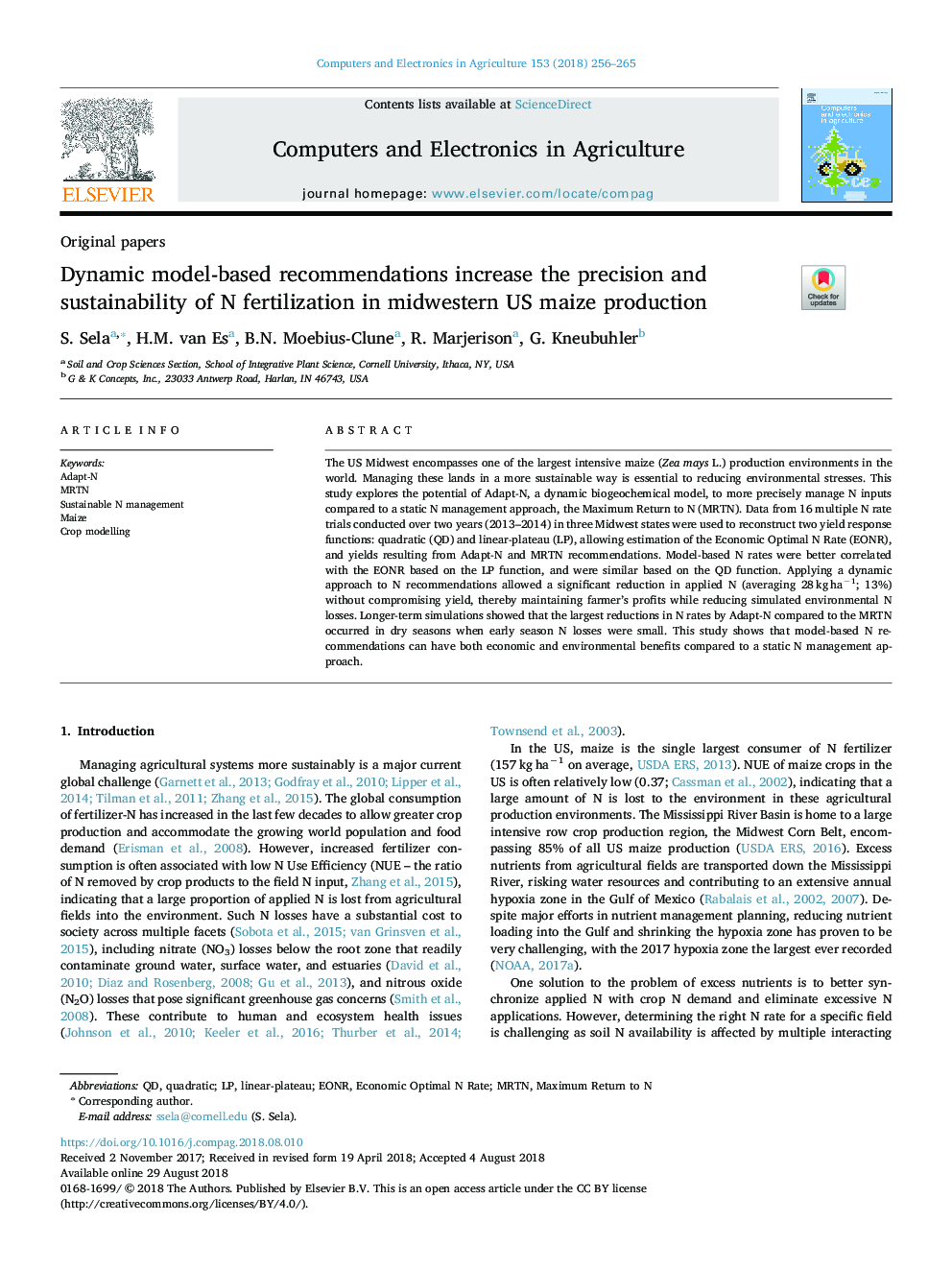| Article ID | Journal | Published Year | Pages | File Type |
|---|---|---|---|---|
| 11000007 | Computers and Electronics in Agriculture | 2018 | 10 Pages |
Abstract
The US Midwest encompasses one of the largest intensive maize (Zea mays L.) production environments in the world. Managing these lands in a more sustainable way is essential to reducing environmental stresses. This study explores the potential of Adapt-N, a dynamic biogeochemical model, to more precisely manage N inputs compared to a static N management approach, the Maximum Return to N (MRTN). Data from 16 multiple N rate trials conducted over two years (2013-2014) in three Midwest states were used to reconstruct two yield response functions: quadratic (QD) and linear-plateau (LP), allowing estimation of the Economic Optimal N Rate (EONR), and yields resulting from Adapt-N and MRTN recommendations. Model-based N rates were better correlated with the EONR based on the LP function, and were similar based on the QD function. Applying a dynamic approach to N recommendations allowed a significant reduction in applied N (averaging 28â¯kgâ¯haâ1; 13%) without compromising yield, thereby maintaining farmer's profits while reducing simulated environmental N losses. Longer-term simulations showed that the largest reductions in N rates by Adapt-N compared to the MRTN occurred in dry seasons when early season N losses were small. This study shows that model-based N recommendations can have both economic and environmental benefits compared to a static N management approach.
Keywords
Related Topics
Physical Sciences and Engineering
Computer Science
Computer Science Applications
Authors
S. Sela, H.M. van Es, B.N. Moebius-Clune, R. Marjerison, G. Kneubuhler,
